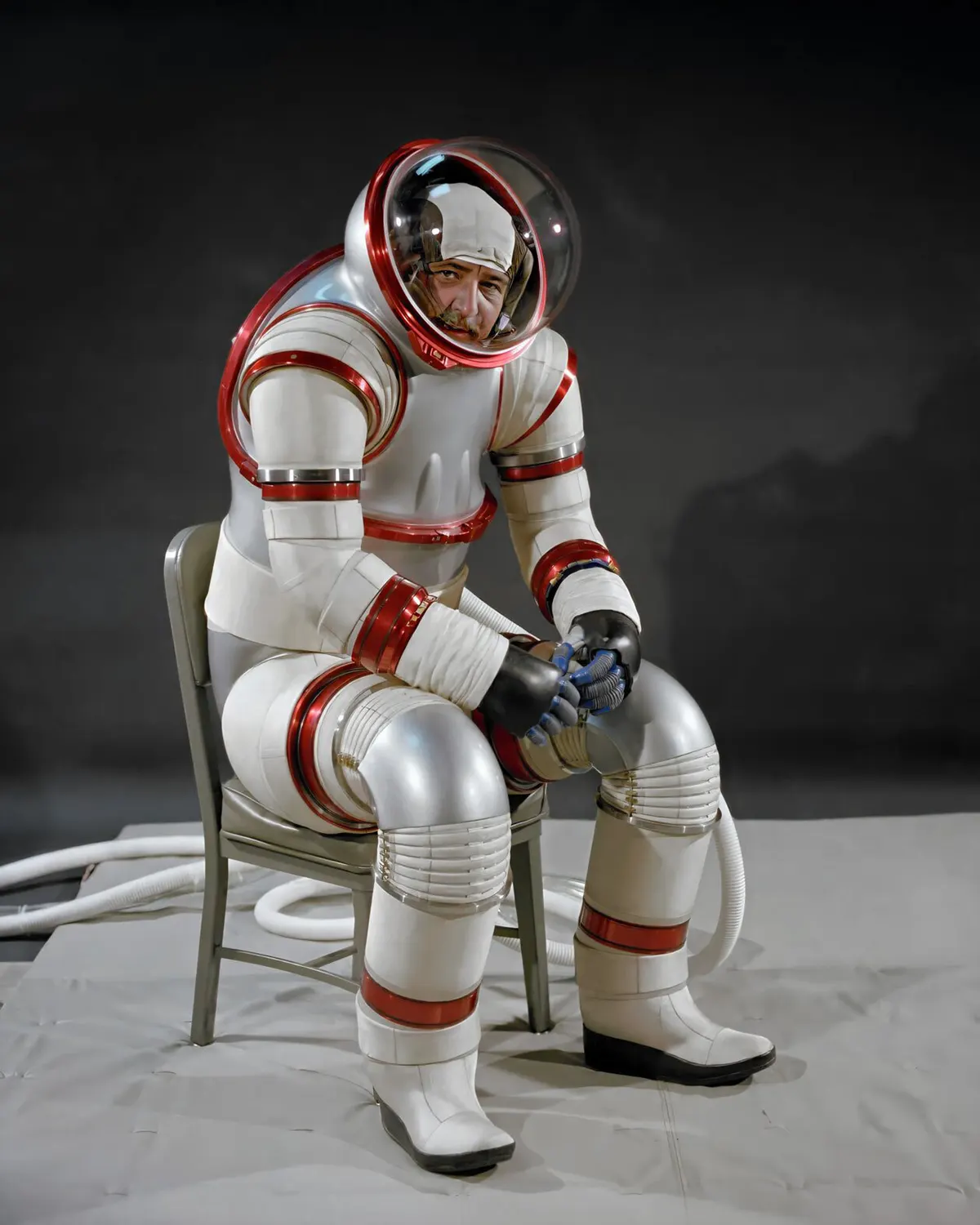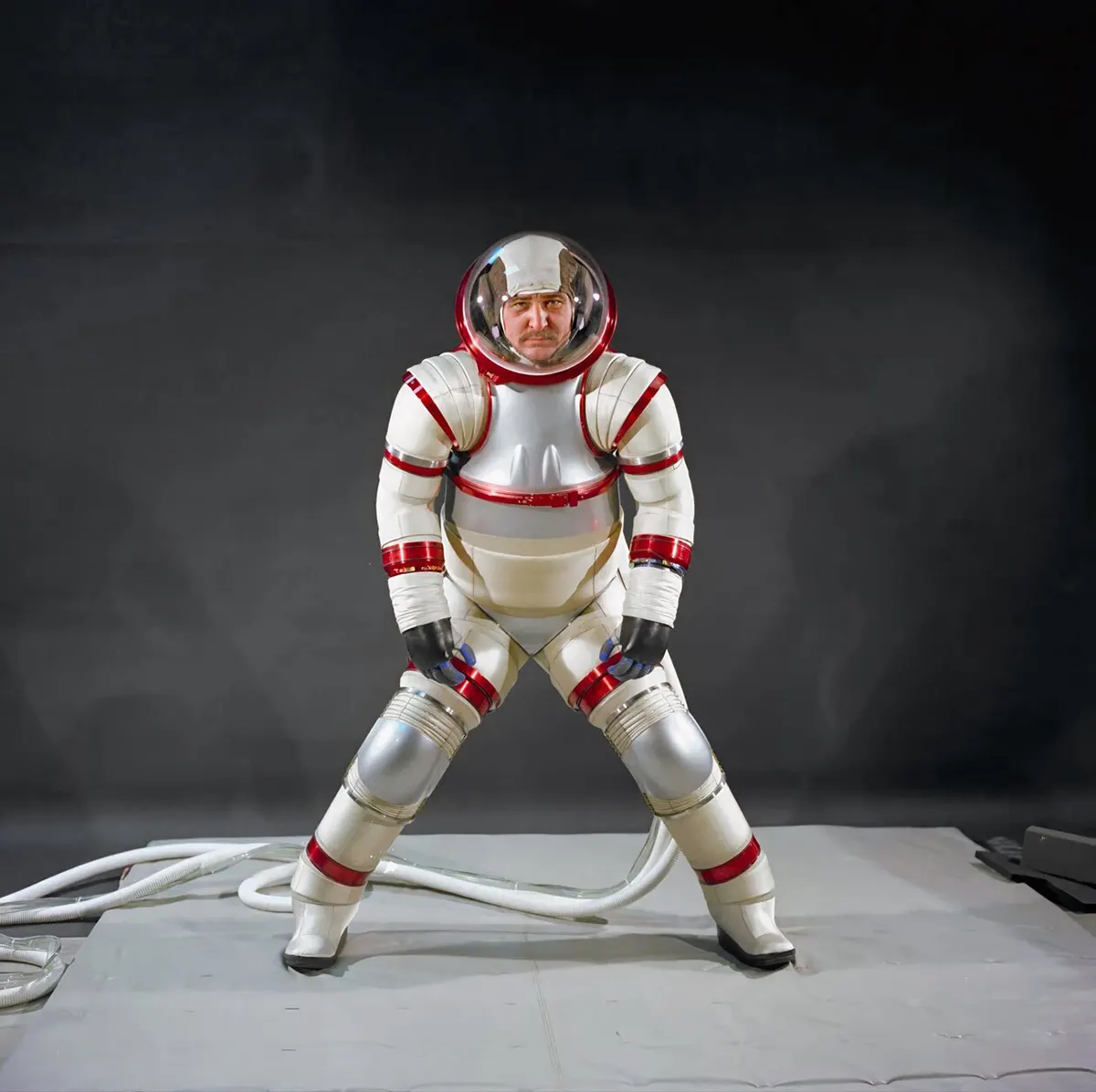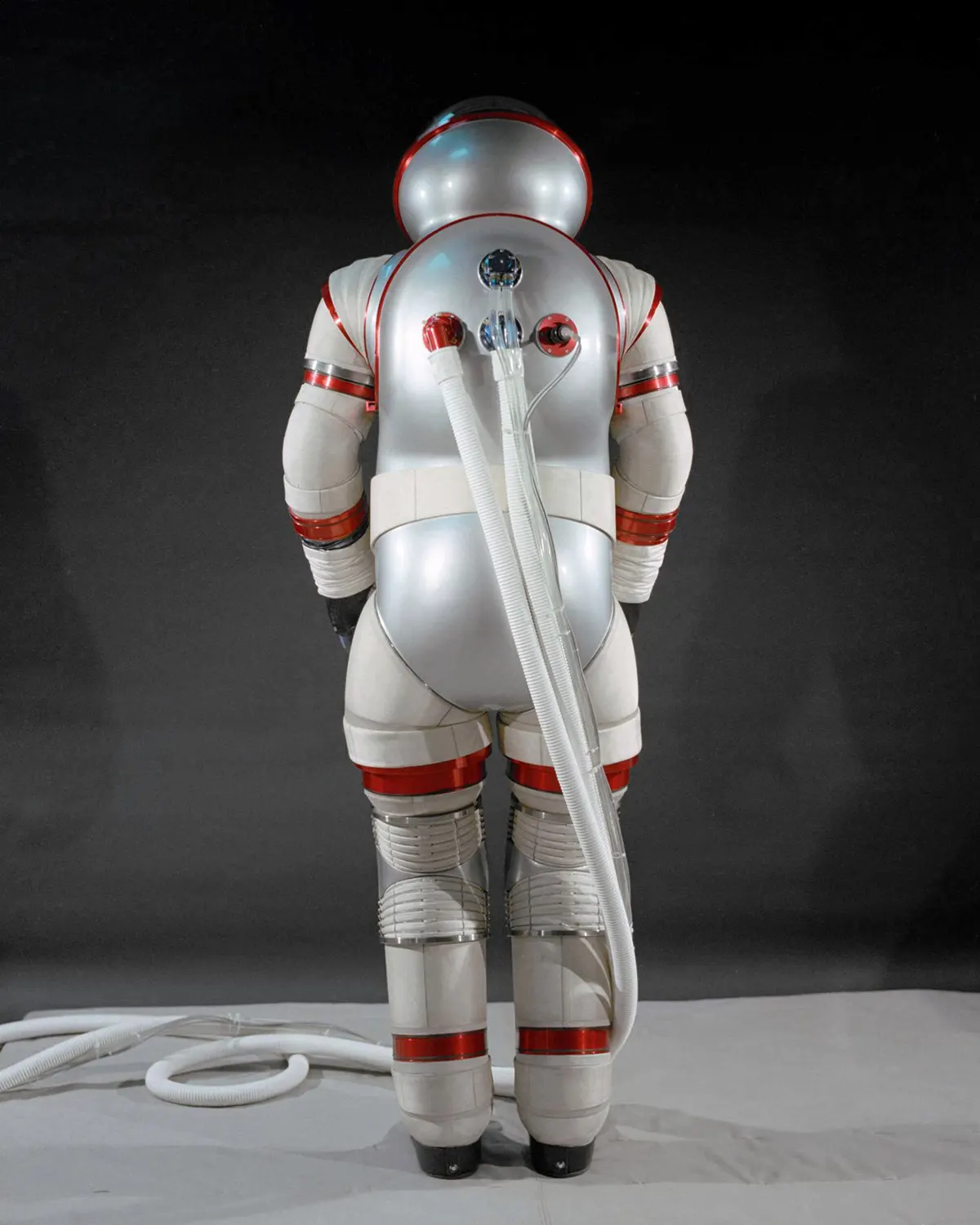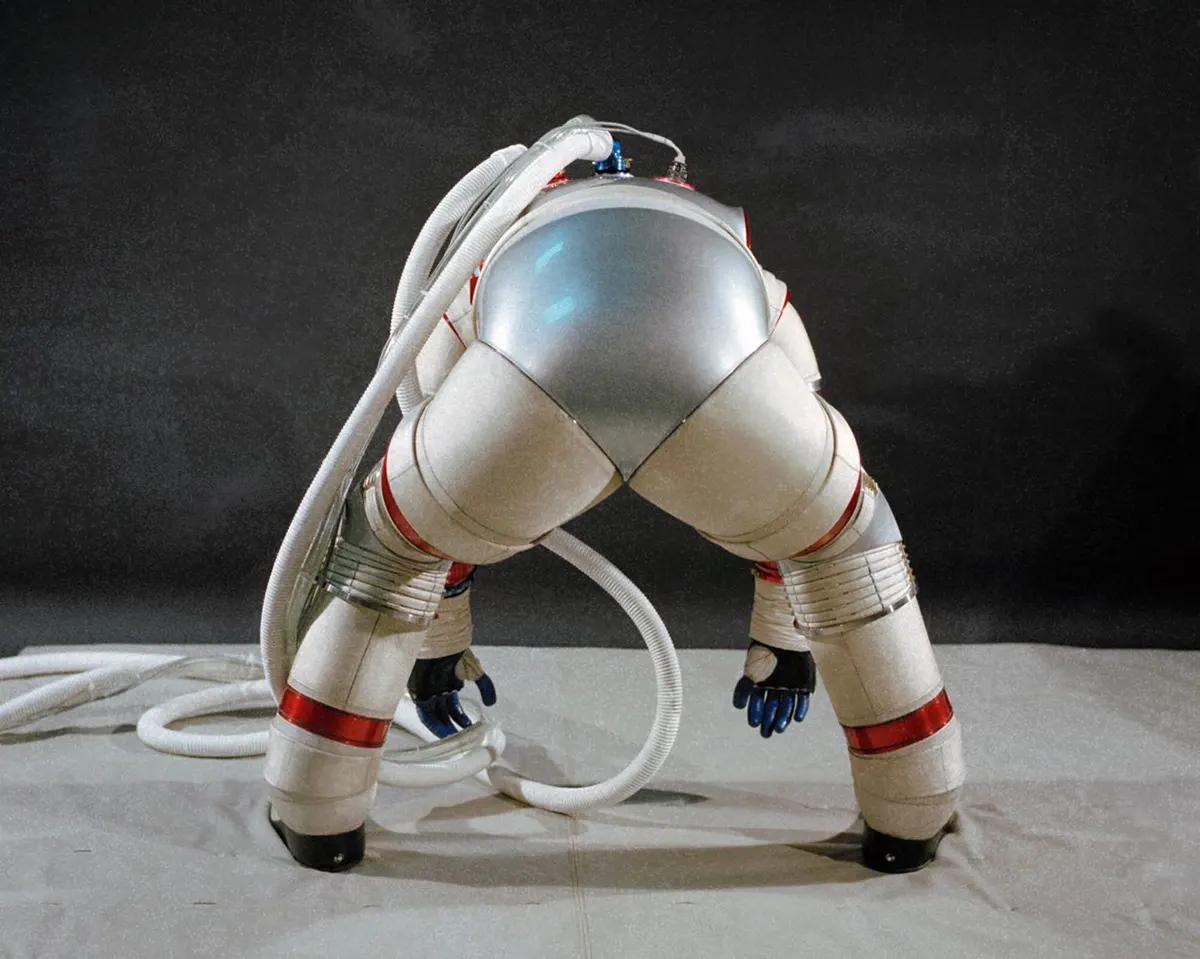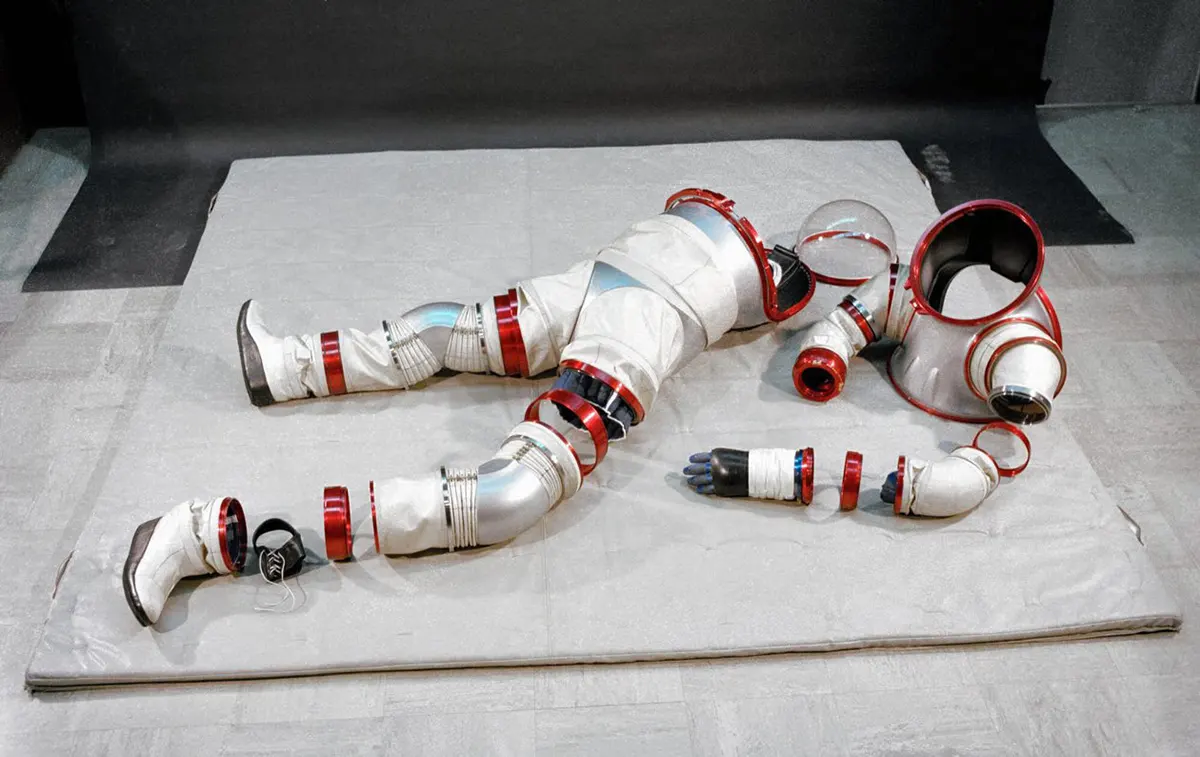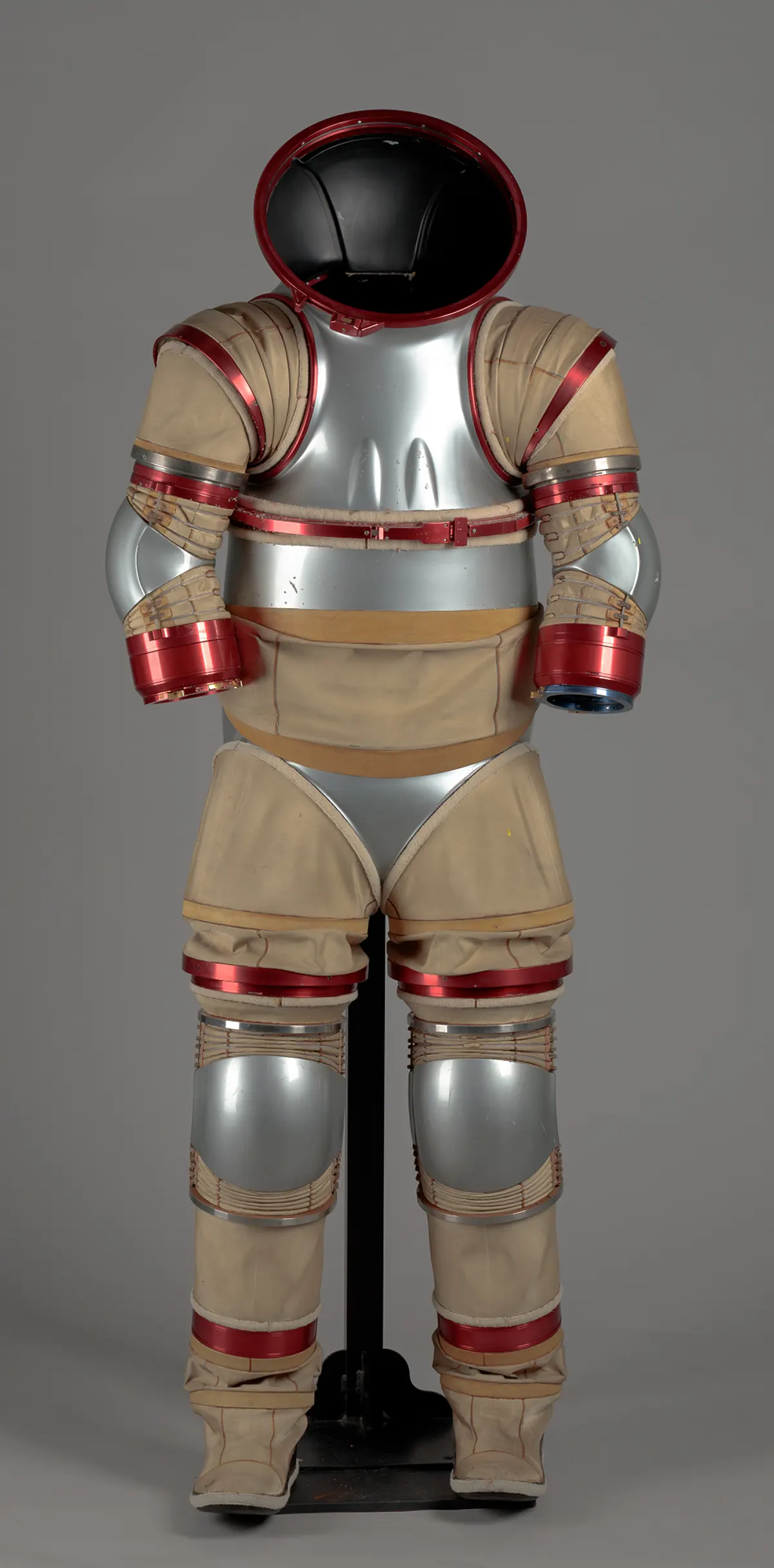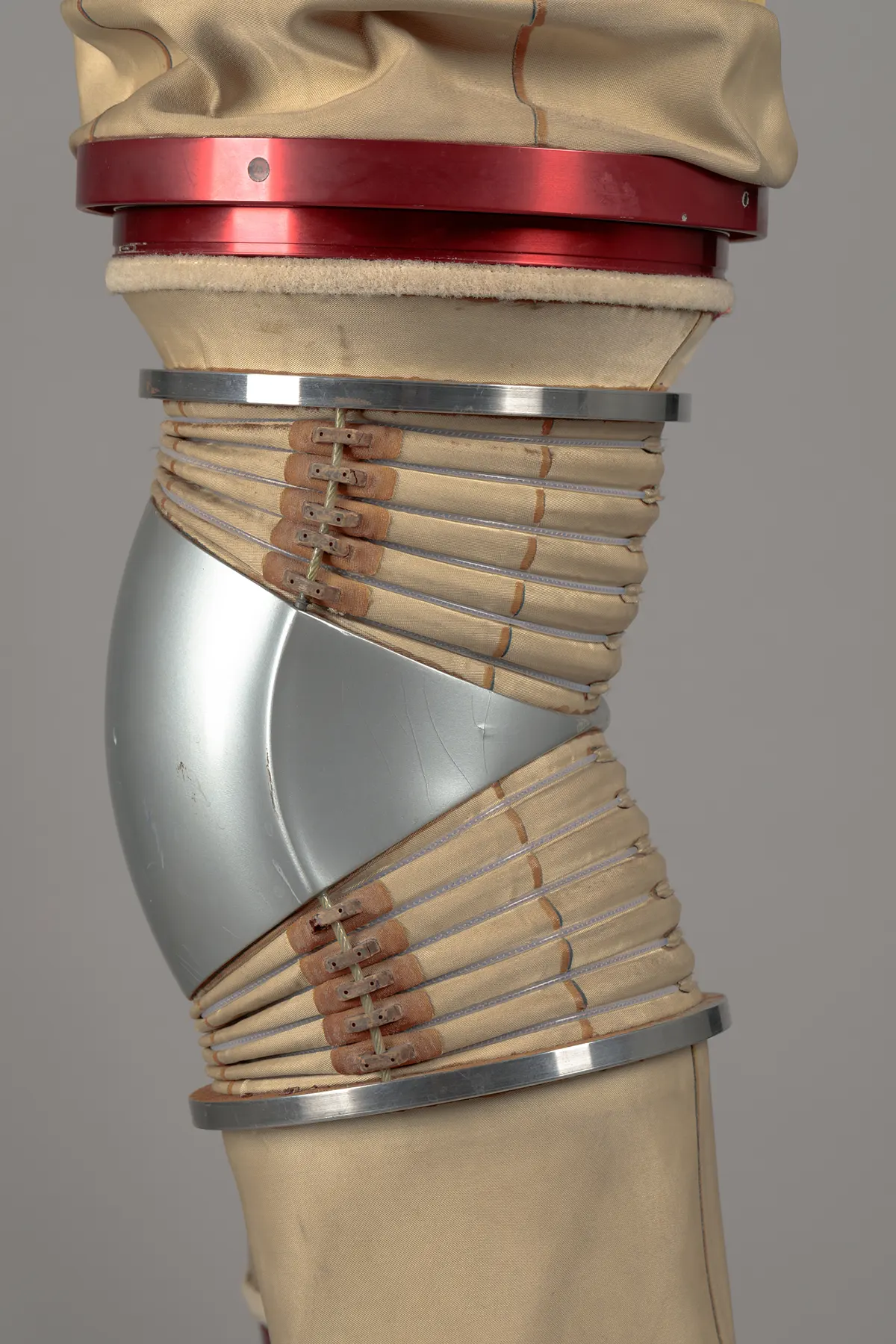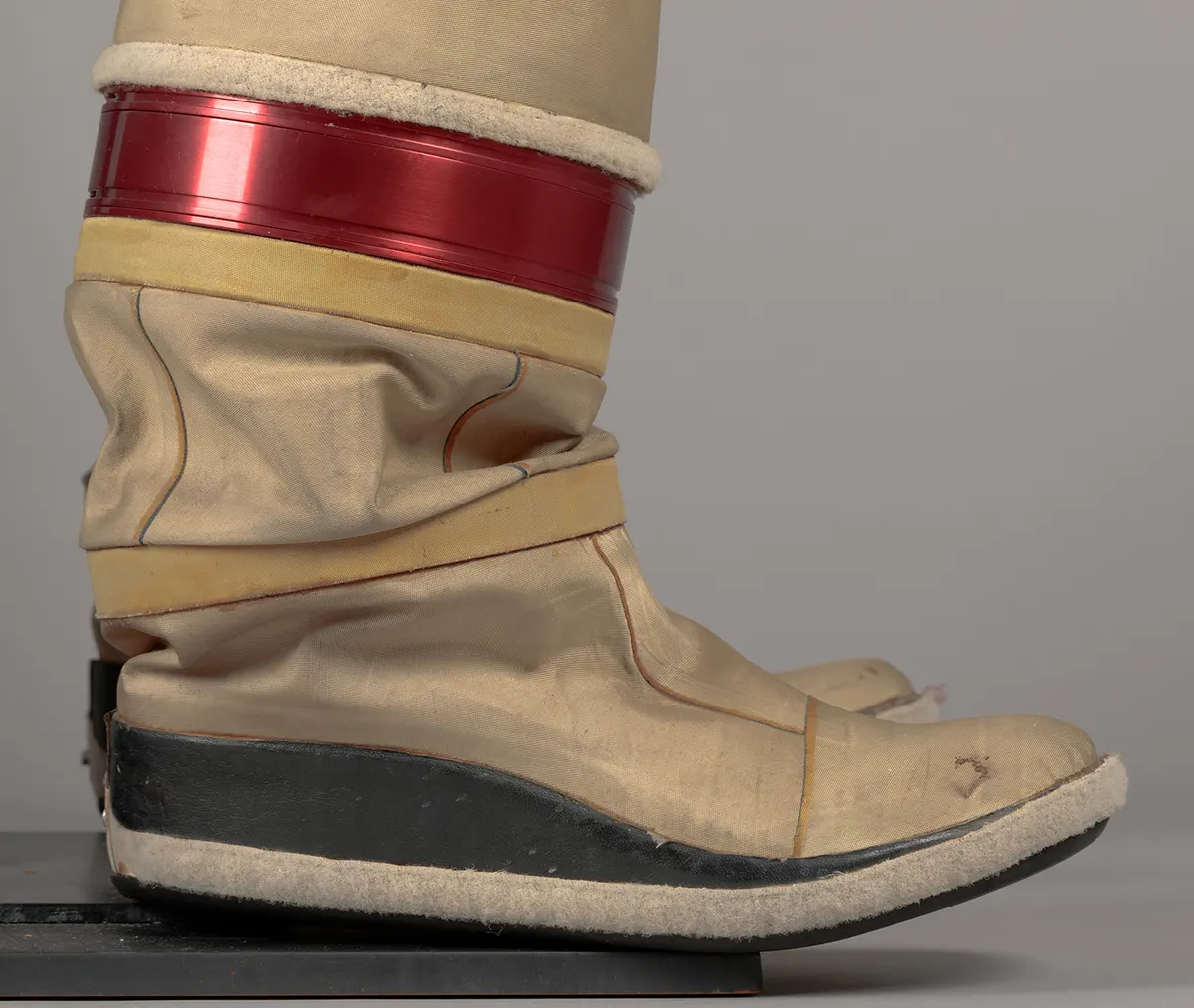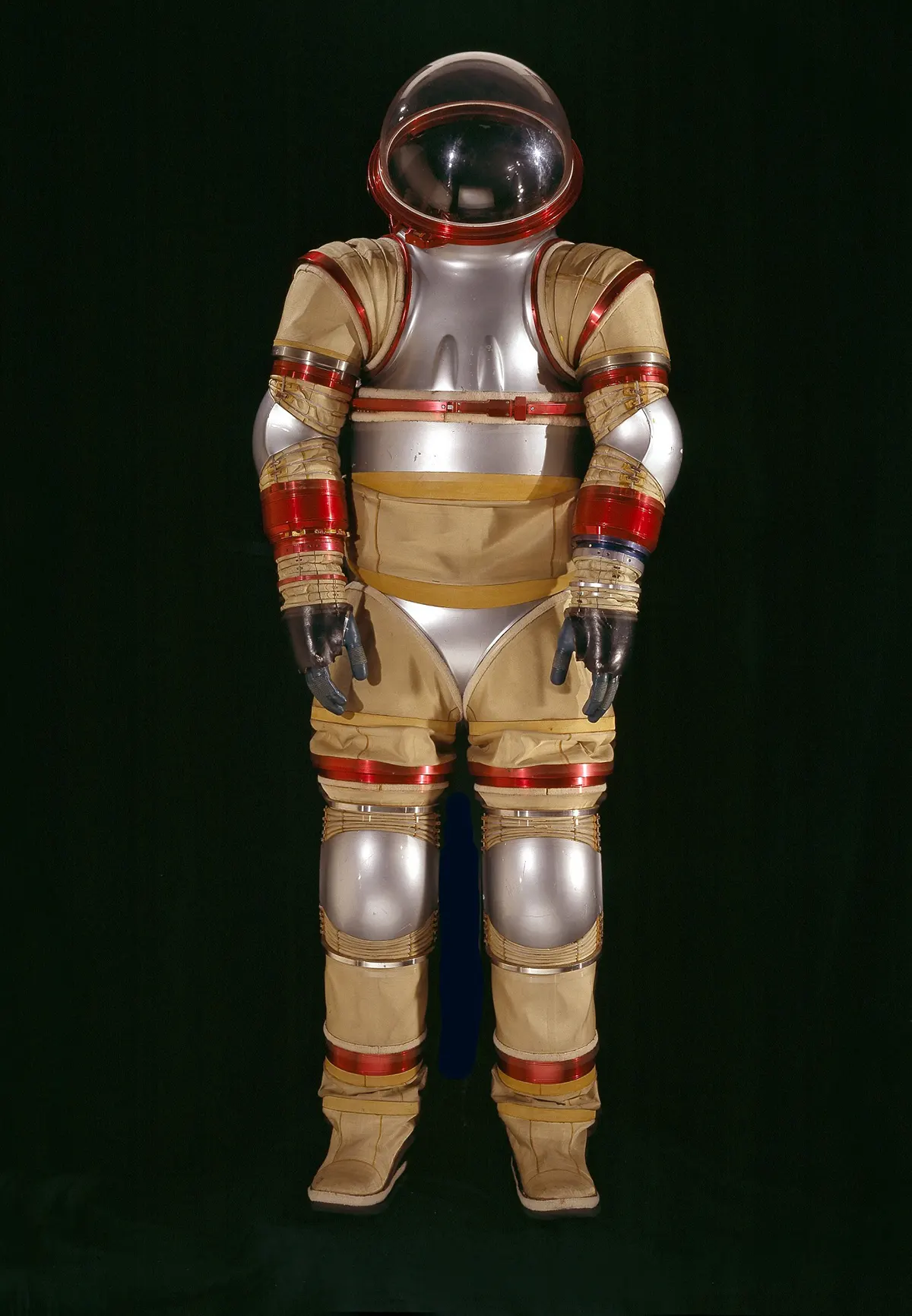ARC, which was the designer and system integrator, also fabricated the double-walled fiberglass upper torso and brief structures, all the mobility joints and sizing hardware, and all the master plaster patterns used for fabric laminate lay-up. Aerotherm manufactured all the fabric structures and sealed bearing assemblies plus assembled the mobility joints. Air-Lock fabricated the dual plane torso disconnect to Ame’s design, along with the dome helmet, helmet disconnect, and glove disconnects. The AX-3 used single-wall laminate structural fabrics with a modular mix-and-match sizing system. The AX-3 utilized an Acurex Corporation bearing and seal design that substantially reduced leakage and minimized rolling resistance. It also employed a combination of toroidal, rolling convolute, and multibearing mobility systems. Overall, the spacesuit incorporated a mix of hard and soft suit components, including hard upper torso, hard lower torso, and hip elements made of graphite/epoxy composite, bearings at the shoulder, upper arm, hip, waist, and ankle, and soft fabric joints at the elbow, knee, and ankle. The 8.3 pounds per square inch (57 kPa) operating pressure of the AX-3 makes it a “zero-prebreathe” suit, meaning that astronauts would be able to transition directly from one atmosphere, mixed-gas space station environment, such as that on the International Space Station, to the suit, without risk of the bends, which can occur with rapid depressurization from an atmosphere containing nitrogen or another inert gas. The program culminated in the development of the prototype AX-5, an all hard suit for high-pressure application and zero prebreathe in the 1980s. The AX-5 shared common design goals with the AX-3. For example, they had to be easy to get into and out of, be comfortable to wear, and allow adequate mobility and range of motion for the jobs to be performed.
(Photo credit: Smithsonian Museums / National Air and Space Museum). Notify me of new posts by email.
Δ Subscribe
